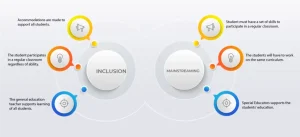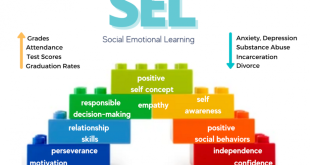Supporting students with learning disabilities is essential for fostering an inclusive and equitable educational environment. Learning disabilities can affect a student’s ability to read, write, calculate, or process information, leading to challenges in academic performance and self-esteem. As educators, parents, and peers, we play a crucial role in providing the support these students need to thrive. This article outlines effective strategies and approaches to support students with learning disabilities, promoting their academic success and overall well-being.
 Understanding Learning Disabilities
Understanding Learning Disabilities
Learning disabilities (LD) are neurological conditions that affect the way individuals process information. Common types of learning disabilities include:
- Dyslexia: Affects reading and language processing.
- Dysgraphia: Impacts writing abilities and fine motor skills.
- Dyscalculia: Affects mathematical understanding and skills.
- Auditory Processing Disorder: Impairs the ability to process auditory information.
Understanding these disabilities is the first step in providing effective support. Each student’s experience with learning disabilities is unique, so it is essential to approach support with empathy and flexibility.
Create an Inclusive Classroom Environment
An inclusive classroom environment is vital for supporting students with learning disabilities. Here are some strategies to promote inclusivity:
1. Foster a Positive Atmosphere
Create a classroom culture that celebrates diversity and encourages all students to express themselves. Use positive reinforcement to build confidence and resilience among students with learning disabilities.
2. Promote Peer Support
Encourage collaboration and teamwork among students. Group work and peer tutoring can help students with learning disabilities feel valued and supported. Assign roles that play to each student’s strengths, fostering a sense of belonging.
3. Educate the Class
Teach all students about learning disabilities to foster understanding and empathy. When classmates learn about the challenges faced by their peers, they are more likely to offer support and encouragement.
Implement Differentiated Instruction
Differentiated instruction involves tailoring teaching methods and materials to meet the diverse needs of students. Here are some effective strategies:
1. Use Multisensory Approaches
Multisensory learning engages multiple senses to reinforce understanding. For instance, use visual aids, auditory resources, and hands-on activities to help students grasp complex concepts. This approach can be particularly beneficial for students with dyslexia or other language processing challenges.
2. Provide Alternative Assessments
Traditional testing methods may not accurately reflect the knowledge and skills of students with learning disabilities. Consider offering alternative assessments, such as oral presentations, projects, or portfolios, to evaluate comprehension and mastery.
3. Modify Assignments
Break assignments into smaller, manageable tasks, and provide clear, step-by-step instructions. Allow students to work at their own pace and provide additional time for assignments and tests when necessary.
Utilize Assistive Technology
Technology can be a powerful tool in supporting students with learning disabilities. Here are some ways to integrate assistive technology into the classroom:
1. Speech-to-Text Software
For students with dysgraphia or writing difficulties, speech-to-text software can help them express their ideas without the physical constraints of writing. Programs like Dragon NaturallySpeaking and Google Docs voice typing can facilitate this process.
2. Reading Assistance Tools
Tools such as text-to-speech software and audiobooks can support students with dyslexia or auditory processing disorders. Programs like Kurzweil and Learning Ally provide accessible reading formats that help students engage with text.
3. Organizational Apps
Encourage students to use organizational apps to help them keep track of assignments, deadlines, and study materials. Tools like Google Calendar, Todoist, or Trello can assist students in managing their time effectively.
Foster Social and Emotional Support
Students with learning disabilities may face social and emotional challenges, including low self-esteem and anxiety. Providing social and emotional support is crucial for their overall well-being.
1. Encourage Self-Advocacy
Teach students to understand their learning disabilities and advocate for their needs. Encourage them to communicate their challenges and seek help when necessary. Empowering students to take ownership of their learning can boost their confidence.
2. Provide Counseling Resources
Make counseling services available to students who may be struggling emotionally. School counselors can offer support, coping strategies, and resources to help students manage anxiety or frustration related to their learning disabilities.
3. Promote Mindfulness and Stress Management
Incorporate mindfulness practices and stress management techniques into the classroom routine. Activities such as deep breathing exercises, meditation, or yoga can help students develop coping mechanisms for dealing with stress and anxiety.
Collaborate with Parents and Specialists
Collaboration with parents and specialists is essential for providing comprehensive support to students with learning disabilities.
1. Maintain Open Communication
Keep lines of communication open with parents regarding their child’s progress and challenges. Regularly update them on classroom strategies and interventions that are working or may need adjustment.
2. Involve Special Education Professionals
Work closely with special education teachers, speech therapists, or occupational therapists to design individualized education plans (IEPs) that cater to each student’s unique needs. Collaboration ensures that all educators are on the same page regarding strategies and goals.
3. Encourage Parent Involvement
Encourage parents to be active participants in their child’s education. Provide them with resources and strategies they can use at home to support their child’s learning.
Conclusion
Supporting students with learning disabilities requires a multifaceted approach that encompasses understanding, inclusivity, differentiated instruction, and emotional support. By fostering a positive classroom environment, implementing effective teaching strategies, utilizing assistive technology, and collaborating with parents and specialists, educators can create an atmosphere where all students can thrive.
Ultimately, the goal is to empower students with learning disabilities to reach their full potential academically, socially, and emotionally. With the right support and resources, these students can overcome challenges and develop the skills necessary for lifelong success. Embracing diversity in learning not only benefits students with disabilities but enriches the educational experience for everyone.


